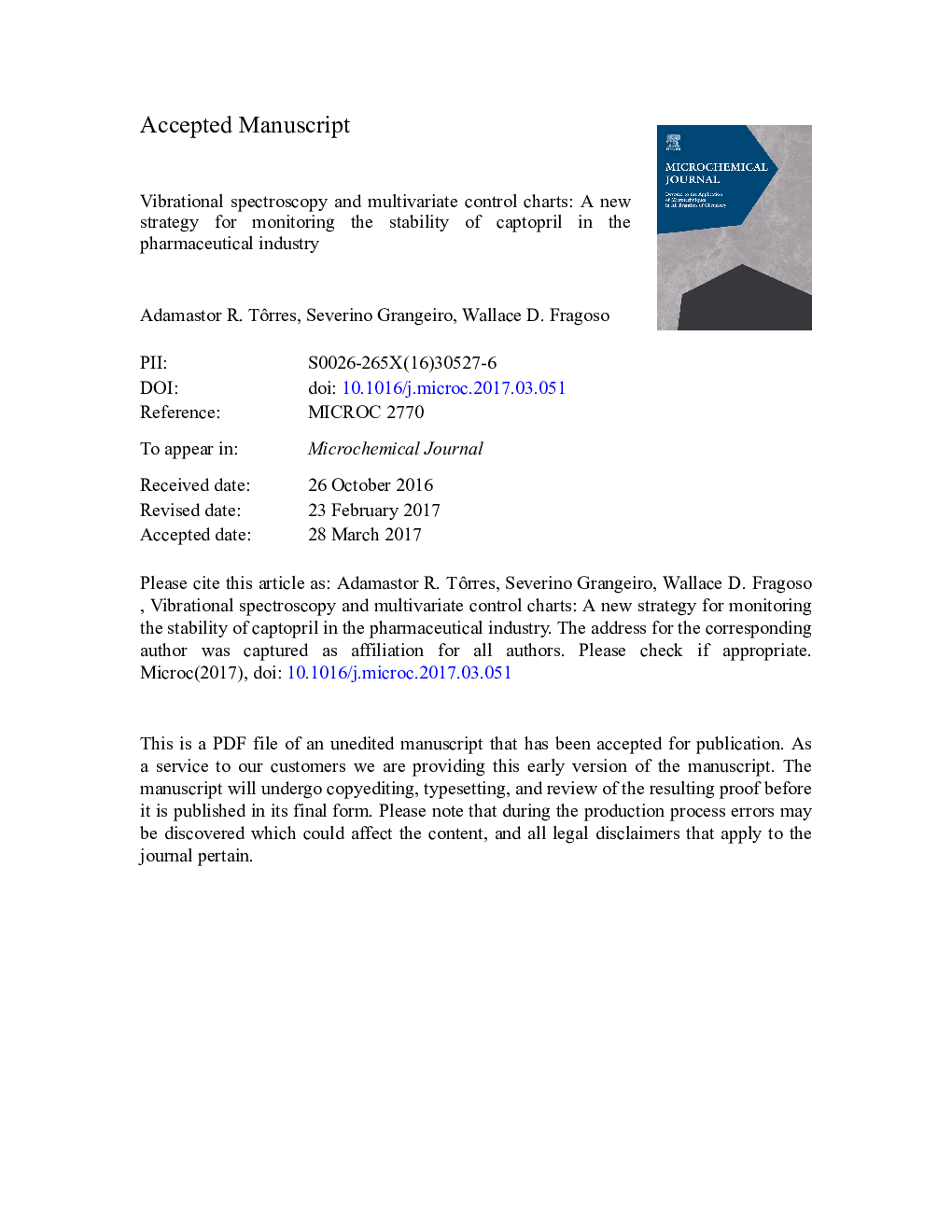| Article ID | Journal | Published Year | Pages | File Type |
|---|---|---|---|---|
| 5139032 | Microchemical Journal | 2017 | 28 Pages |
Abstract
The quality control of pharmaceutical production has focused on controlling impurity formation and product degradation. High temperatures, humidity, and the presence of hygroscopic excipients affect the stability of captopril. These conditions accelerate the degradation of captopril and favor the formation of captopril disulfide. In this study, multivariate control charts were combined with vibrational spectroscopy to monitor the stability of captopril. Fifty spectra of different batches of normal captopril were recorded in the mid-infrared (MIR) and near-infrared (NIR) spectral regions, and they were used in the training phase of multivariate charts. The validation phase consisted of 20 lots of normal captopril and 10 lots past their expiration dates. A stability study was performed by subjecting one batch of captopril to a temperature of 40 ± 2 °C and relative humidity of 75 ± 5% for a period of six months in a climatic chamber. The captopril samples were collected weekly from the climatic chamber during this period, for a total of 24 spectra. Principal component analysis was performed on the MIR and NIR datasets, and the scores of the principal components were used in the construction of Hotelling's T2 chart, whereas the squared prediction error (SPE) chart was built with the residuals of the model. In the validation phase, the SPE chart adequately identified expired lots in these two infrared regions. A strategy based on the successive projections algorithm in combination with a multivariate cumulative sum chart was developed to improve the sensitivity of Hotelling's T2 charts in the MIR region in the monitoring step of the stability study. Our results indicate that vibrational spectroscopy combined with control charts is a useful tool for monitoring changes in the stability pattern of captopril.
Related Topics
Physical Sciences and Engineering
Chemistry
Analytical Chemistry
Authors
Adamastor R. Tôrres, Severino Jr., Wallace D. Fragoso,
